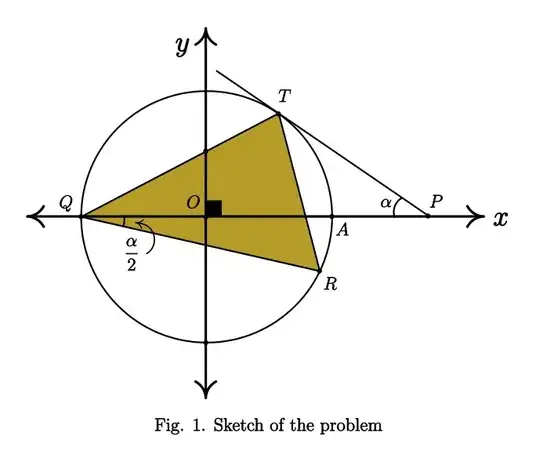The problem is as follows:
The circle shown in the figure from below is a unit circle. $PT$ is a line tangent to that circle on point $T$. Angle alpha measured in radians is an acute angle. Using this information, find the area of the orange shaded region which is comprised $\triangle TQR$. Assume that the length of the radius of the unit circle is of 1 decameter.
The choices given in my book are as follows:
$\begin{array}{ll} 1.&200\cos\alpha\sin\left(\frac{\pi}{6}-\frac{\alpha}{2}\right)\\ 2.&100\sqrt{2}\cos\frac{\alpha}{2}\sin\left(\frac{\pi}{4}-\frac{\alpha}{2}\right)\\ 3.&50\sin\alpha\sin\left(\frac{\pi}{4}-\frac{\alpha}{2}\right)\\ 4.&100\sqrt{2}\sin\frac{\alpha}{2}\sin(45^\circ+\alpha)\\ \end{array}$
I'm not sure exactly how to solve this question, it seems kind of difficult to my abilities.
I tried all sorts of manipulations on the image but I can't find a proper relation to get the base of the triangle. I also considered the oportunity to use the tangent secant theorem but this did not helped me much in the solution.
This half angle thing which is on the third quadrant it is making me feel confused. Needless to say that it is more than thirty minutes and I don't think I am getting anywhere with this problem.
Can someone help me here?.
I am totally lost here. Since I'm not good at spotting things it would help a lot that a drawing could accompany the solution as I guess that it is needed some labels to see where should additional or rearranging the angles would be needed to solve this problem.
